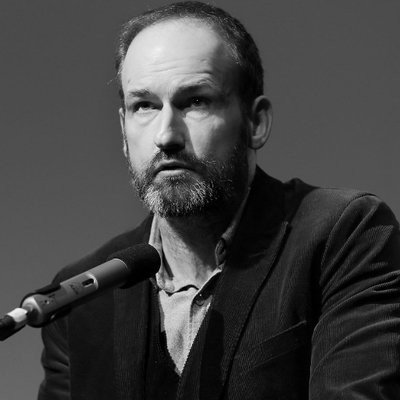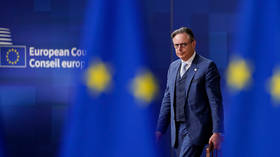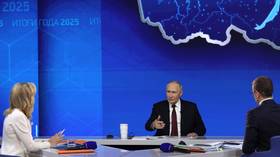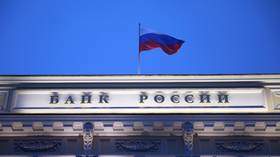‘Arab Spring opened a Pandora's box of extreme Islamism’

The military rebellion that took place in Libya recently, planned and led by former general, Khalifa Hiftar, involved an assault on the nation’s parliament in Tripoli and on an Islamist organisation in Benghazi.
Hiftar, who defected to the US in the 1980s before returning to Libya to participate in the NATO-driven assault on the former Libyan leader and his government, has pledged to fight Islamist militants in Libya, who currently exert a major influence over the country’s fragile government.
Hiftar’s emergence at the head of a coalition of ex-Libyan army personnel and sympathetic tribal forces, in a country reduced to chaos after NATO’s military campaign led to Gaddafi’s downfall in 2011, is further evidence of a gathering backlash against Islamism and religious extremism throughout the Arab world. This wave of Islamist violence and terror has turned out to be the major beneficiary of the wave of uprisings which swept through the region starting in late 2010 and which came to be known as the Arab Spring.
Sadly, what began as a spontaneous mass movement of people no longer willing to exist within the stifling constraints imposed on their lives and aspirations by autocracy, having done so for decades, turned in on itself when its political and popular tide ran out in Libya and the West intervened to co-opt it as a proxy to advance its own geopolitical and regional agenda.
The consequent chaos and destabilization wrought in Libya, and later Syria, created a political vacuum that was filled by the forces of reaction, otherwise known as Sunni fundamentalism. The proliferation of this malignant ideology on the back of the Arab Spring has been a disastrous development for the region, plunging it into an abyss of sectarian and communal conflict in Iraq, Libya, and Syria, while growing in Africa and attracting more and more young Muslim men into its ranks across the world.
Many witnessing its growing influence over the past few years had
considered its spread as further confirmation of the death of
Arab nationalism as a counter hegemonic political force in the
region; its high tide in the 1950s and 1960s responsible for
spurring its economic and social development. A variety of
factors resulted in the decline of Arab nationalism through
succeeding decades, however, not least of which was the West’s
success in blunting its potency, either via the use of proxies,
such as Israel, or directly via the projection of military and
economic power.
Dark chapters

To get an idea of what the Arab world would look like under the iron heel of Islamism, you only have to consider the tragedy to befall Afghanistan. In the sixties and seventies, Afghanistan benefited from the influence of Soviet-style planned economic development. The state control of economic development was a key factor in the success of the modernising governments that peppered the Arab world in the same period, involving the use of the region’s vast oil wealth to invest heavily in infrastructure, education, and industry. In Afghanistan secularism, women’s rights, education, freedom of religion, and modernity had created an urban society to compare with any when it came to modernity.
But, then, in response to a campaign waged by the Afghan government to extend the modernising reforms to the countryside, a campaign that involved an attempt to break the power of local Mullahs and clerics, a resistance movement began. Soon it attracted the support of the West, seizing the opportunity to undermine a Soviet ally, and soon became a cause celebre for Islamists throughout the world, descending on the country to wreak havoc.
The fate of Afghanistan after a bitter conflict lasting years is one that we are by now familiar with. What is important for us to understand today is that it is the same fate that awaits those nations across the Middle East which currently find themselves the subject of similar campaigns of Islamist terror – specifically Libya, Syria, and Iraq.
But, increasingly, the backlash created provides the region with hope of a resurgence of something approaching the Arab nationalism that once acted as a lynchpin and unifying political force, capable of bringing Sunnis, Shiites, Christians and every Arab minority under the same umbrella.
While the Syrian people and government remain locked in a brutal struggle with an invasion of Sunni fundamentalists intent on turning the country into a graveyard, in Egypt the Muslim Brotherhood’s rise on the back of the country’s first democratic elections since the toppling of the Mubarak dictatorship led straight to their demise. Millions of Egyptians poured back out onto the streets in late June-early July 2013, fearful of the direction which former president, Mohamed Morsi, and the Brotherhood were taking the country in. Events in Syria and Libya were clearly a prime factor in the determination and size of these protests, revealing the abiding suspicion of the Muslim Brotherhood’s intentions in a society with strong secular and liberal traditions.
Step forward the Egyptian armed forces, led by their
commander-in-chief, Abdul Fattah el-Sisi.
Sisi’s intervention and forced removal of Mohamed Morsi from
office, followed by the army’s ruthless suppression of the Muslim
Brotherhood in conjunction with the mass arrest of its leadership
and supporters in the aftermath, has been popularly supported in
Egypt. Likewise, Bashar al-Assad and the Syrian Arab Army still
enjoy popular support in Syria after three years of merciless
violence has decimated large swathes of that country.
Increasingly, and in some cases at huge cost, Sunni fundamentalism and extremism is being resisted across the Arab world. Speed the day when it is reduced to nothing more than a dark chapter in the region’s history.
The statements, views and opinions expressed in this column are solely those of the author and do not necessarily represent those of RT.
The statements, views and opinions expressed in this column are solely those of the author and do not necessarily represent those of RT.













